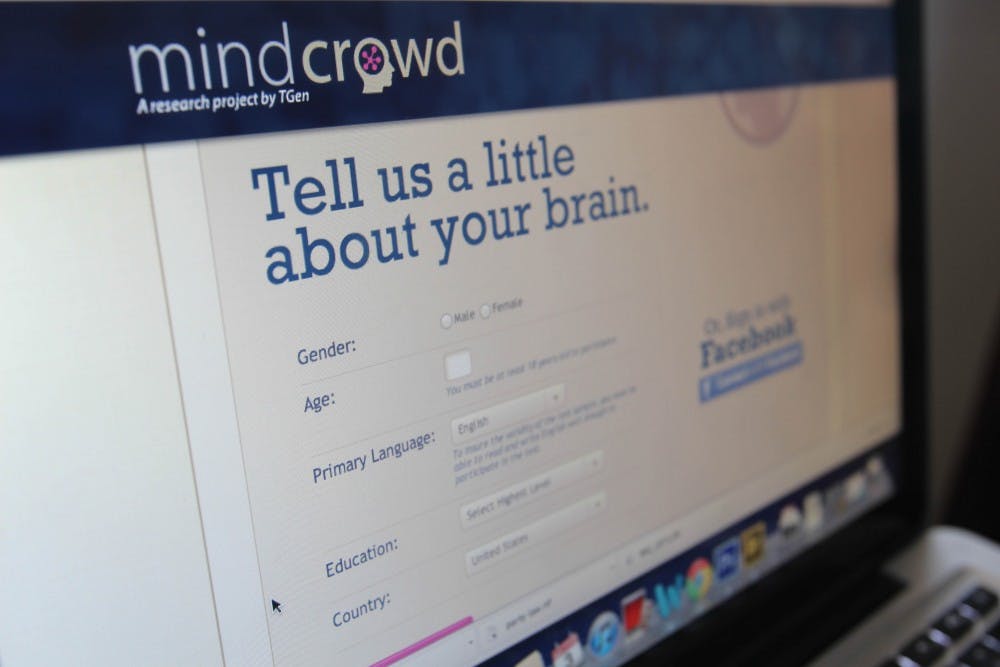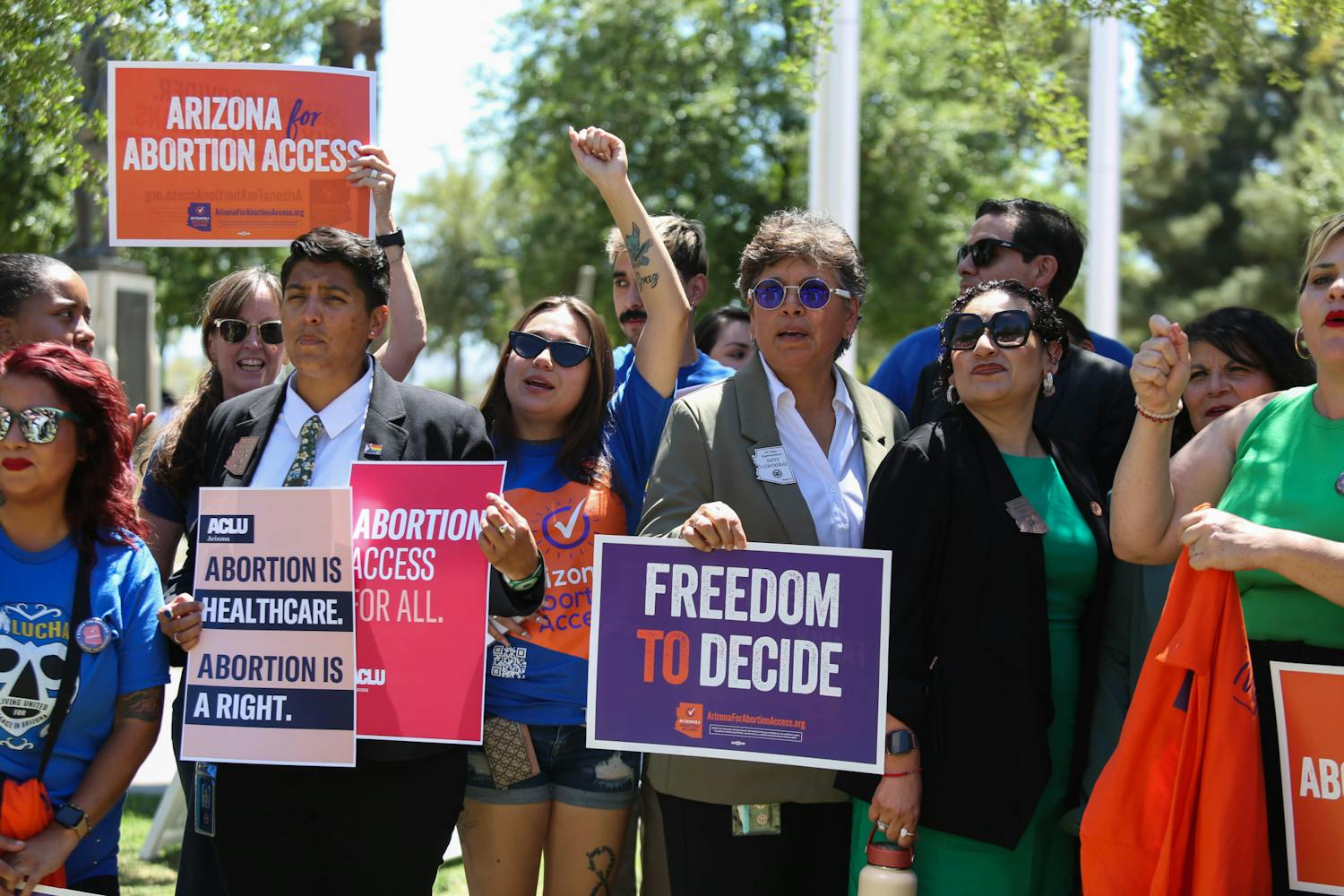 MindCrowd is using an online test to gain more data on Alzheimer's Disease and come closer to finding a cure. (Photo by Dominic Valente)
MindCrowd is using an online test to gain more data on Alzheimer's Disease and come closer to finding a cure. (Photo by Dominic Valente)
As college students, misplacing assignments and forgetting important test dates is not uncommon, but to not remember a family face or forget one’s own identity is the reality that someone with Alzheimer’s disease must endure every day.
There is no cure for this mind-degenerative disease. However, a local initiative is looking to advance the research of finding a cure.
MindCrowd is utilizing the power of the Internet to bring researchers closer to a cure. The online research study identifies the genetic markers that have to do with learning and memory.
MindCrowd was founded and is conducted by Matt Huentelman, an associate professor in the neurogenomics division of the Translational Genomics Research Institute in downtown Phoenix.
The purpose of the study is to understand how the human brain remembers things and how it might change as people grow older. Knowing the way a person’s memory changes can help in understanding how Alzheimer’s affects the brain.
“If we go after that genetic target, we can improve memories in aged levels of cognitive decline,” Huentelman said. “By studying the healthy brain, we can learn the basics of how the brain works and what determines the differences in every individual's cognitive function.”
The project’s goal is to get one million people to take a web-based memory test that will evaluate the way people think. Participants will have to take three tests online, and their information will be recorded into a registry.
After completing the test, participants can view their scores and see how they did compared to others who also took the test.
“Before MindCrowd, we had a similar study done with 500 individuals, and it was conducted face to face,” Huentelman said. “The problem with that project was that it was expensive, and we realized that we wanted to extend the study to reach more extremes. So, we decided to use the Internet to aid in reaching out to more people.”
The study will be divided into two phases. After phase one, certain participants will be selected to participate in phase two. Those selected for phase two will be asked to participate in tests of memory and other cognitive functions. They will also be asked for a saliva sample.
The participants who are selected for phase two are chosen at random and anyone is eligible.
ASU alumna Anna Gunderson, who interned at the Translational Genomics Research Institute, was in charge of managing the Institute's social media pages such as Facebook and Twitter. She also posted daily on its web page.
“I think MindCrowd is something that will impact science for a lifetime," she said. “I think MindCrowd is one of a kind, because it’s the first to use Internet to aid in helping find the cure to the disease.”
For students who have a family member with Alzheimer’s, this project really hits home for them.
Theatre freshman Reyce Carrasco said every time he saw his grandmother, he could see how she was slowly changing. After some tests, the family discovered she had Alzheimer's disease. Following the diagnosis, Carrasco took care of her for two years.
Projects such as MindCrowd are a step in the right direction, Carrasco said.
“Any sort of progress for being able to prevent Alzheimer’s is great,” Carrasco said. “I think that more and more people are starting to understand the disease and how it impacts our society.”
Reach the reporter at kgrega@asu.edu or follow her on Twitter @KelcieGrega




